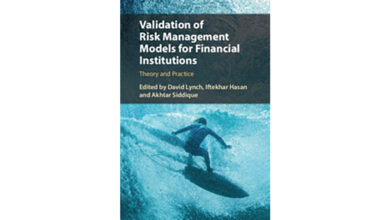Growing More with Less by Robert Horn

5 min
(1403 words)
Read
Download PDF
Case Study
In the battle against hunger, AI can help fewer
farmers generate more food
Artificial intelligence (AI) is making
its mark on food and agricultural production
chains. The groundbreaking technology is already
in use to engineer new varieties of climate resistant
rice; provide data on soil; guide drones that
precision spray fertilizers and pesticides; and sort,
inspect, and grade produce. “AI-driven smart agriculture
provides tremendous potential for boosting
food security and to reduce or even end hunger in
many regions of the world,” said Channing Arndt,
of the Consultative Group on International Agricultural
Research, a global research partnership.
Policymakers in Thailand agree. In 2014, they
unveiled Thailand 4.0, a 20-year national strategy
for advanced development. Among its priority
sectors are food, agriculture, and digital industries.
Those are woven together in government run
Smart Farmer and Young Smart Farmer programs
that encourage growers to adopt precision agriculture
by connecting with new technologies. These
include AI-controlled drones and software for
intelligent and targeted spraying to increase yields
while protecting the environment and ecosystem.
Food and agriculture have long been sources of
strength for Thailand. The Southeast Asian kingdom
of 70 million people is the world’s 15th largest
food exporter and the only net food exporter in Asia.
With a projected $44.3 billion in shipments this year,
Thailand plays a crucial role in regional and global
food security and the campaign to end hunger.
But that campaign, despite impressive gains
during the past decade, has recently suffered setbacks.
The pandemic, war in Ukraine, and resulting
disruptions left an estimated 735 million people
(9.2 percent of the global population) undernourished
in 2022, according to The State of Food Security and Nutrition in the World, published by the United
Nations. Even food-rich Thailand saw hunger rise
for the first time in a decade. In response, policymakers
in several regions are exploring how digital
technologies can make agriculture more productive
and food chains more efficient to turn the tide on
malnutrition and food scarcity.
For all the promise, some researchers warn about risks. If the data are bad, AI’s results will be bad.
Using AI to Fight Hunger
Thailand is just one example of how countries are
using AI to combat rising hunger, food insecurity,
and poverty, which take a toll on economies. Undernourished
people need more public assistance and
are less productive workers, which can affect per
capita income, growth, and sometimes political
stability. At the same time, younger farmers are
migrating to better paying jobs in cities, leaving
fewer hands to produce an increasing volume of
food for a growing global population. Those combined
trends could spell crisis, but analysts and policymakers
see hope in new technologies, including
AI, to help fewer farmers generate more food.
Nurturing the digital ecosystem is foundational
in that effort, said Krithpaka Boonfueng, executive
director of the National Innovation Agency (NIA).
In October, Thailand launched THEOS-2, the first
Earth observation satellite jointly designed by Thai
and British engineers, which will gather data for
smart agriculture. NIA has incubator and accelerator
programs that help source private sector investment
for agricultural technology start-ups to deliver
the data to the field. The Digital Economy Promotion
Agency (DEPA), another technology arm of the
government, manages the One Community, One
Drone program, which has farmers in 500 communities
sharing drone services to manage their fields.
“Even farmers want technology, but the technology
has to be simple enough for them to use,” said Preesan
Rakwatin, executive vice president of DEPA,
which helps match tech businesses with markets
and also funds start-ups.
One of those start-ups, Ricult, is already helping
farmers in Pakistan, Thailand, and Vietnam.
Founded in 2015, Ricult is a dual fintech and
agritech firm. Its AI-driven app, with more than
800,000 downloads in Thailand, provides information
and tools that help smallholder farmers
choose the right crop varieties and precision methods
to increase productivity and profitability. Its
portal also assists farmers with a perennial pressing
problem: access to finance. Meanwhile, Mitr
Phol Group, the largest sugar producer in Asia, has
partnered with IBM for AI-driven data solutions for
farmers, and Chia Tai, one of Thailand’s biggest
agri-food companies, is using autonomous drones
made by XAG of China.
Smarter Policies
But smart farming is still relatively rare. Ricult
cofounder Aukrit Unahalekhaka said that government
agencies trying to micromanage while
working in insulated teams hinder uptake. It’s a
problem, he said, throughout the region. “Governments
should be creators of policies and facilitators
of funding for start-ups, innovators, and farmers.
It is much more efficient to let the market work,”
Unahalekhaka said.
That doesn’t always happen. Several governments
in Africa, another continent struggling with
hunger and food security, have passed restrictive
drone regulations, and acquiring a license for one is
difficult, according to “Empowering Africa’s Food
Systems for the Future,” a report by the International
Food Policy Research Institute (IFPRI).
However, countries such as Kenya, Rwanda, Tanzania,
and others are devoting resources to building
a digital ecosystem and literacy for farmers
so that they can access online extension services,
weather forecasts, market information, and financing.
Obstacles such as connectivity and digital literacy,
however, remain. “While the digital revolution
holds immense promise for African food systems,
addressing these challenges is pivotal for its success,”
according to IFPRI.
For all the promise, some researchers warn
about risks. If the data are bad, AI’s results will be
bad. And AI can be programmed to increase yields
while ignoring negative impacts on the environment.
“AI can be fine-tuned to match your goals. It
is not perfect,” Unahalekhaka said, adding that he
hasn’t seen farmers misuse AI so far. He is one of
many who believe that the benefits outweigh the
risks and that results are likely to be positive. That’s
because of the motivation he believes he shares
with others in agricultural technology: “We want
to make the world a better place.”
Opinions expressed in articles and other materials are those of the authors; they do not necessarily reflect IMF policy.






